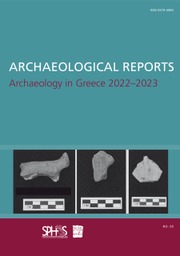Article contents
Macedonia and Thrace: Iron Age to post-Roman urban centres
Published online by Cambridge University Press: 08 December 2014
Extract
Macedonia continues to offer a great deal of new material evidence, including much systematic information, as well as major, occasionally sensational discoveries (see Catherine Morgan's “View from Greece”, above), whether in those areas that are considered to be the historical “heartlands” of the Argead kingdom, Pieria and Emathia, the mountain regions of the northern and western Pindus or in eastern Macedonia, which comprises areas with a rather different historical and cultural profile. The administrative area of Thrace has, by contrast, played a more modest role in recent field research, except for a limited number of key sites and occasional finds resulting from development work along the route of the new Egnatia Odos. The “remarkable decade” preceding and following the Athens Olympics of 2004 has played out differently in northern Greece, where the proliferation of archaeological investigations has been driven largely by development work in and around Thessaloniki (and, to a lesser extent, Edessa and Veroia), particularly along routes connected to the national highway and the network of underground shafts and tunnels associated with the construction of Thessaloniki's metro line and stations along its axis.
- Type
- Archaeology in Greece 2013–2014
- Information
- Copyright
- Copyright © Authors, the Society for the Promotion of Hellenic Studies and the British School at Athens 2014
- 1
- Cited by


